SpaceX launches station cargo flight
- Published
The launch of the Falcon-9 rocket went smoothly
US company SpaceX has launched its latest resupply mission to the International Space Station (ISS).
The California firm's Falcon-9 rocket successfully executed its ascent from Cape Canaveral, Florida, deploying the Dragon freighter on a path to the orbiting platform.
The capsule is carrying just over two tonnes of food, equipment and science experiments.
These stores are expected to arrive at the ISS on Sunday.
Astronauts will use a robotic arm on the station to reach out and grab the Dragon. It will then be pulled into a free berthing position.
The crew will then be able to remove the freighter's contents.
This is the third cargo run being made by SpaceX under its $1.6bn contract with the US space agency (Nasa).
The US government handed the task of resupplying the ISS to the private sector following the retirement of the space shuttles in 2011.
Virginia-based Orbital Sciences Corporation has a similar contract to SpaceX.
Friday's launch looked marginal for much of the day. Meteorologists had forecast only a 40% chance of favourable conditions.
But despite some threatening cloud, the Falcon got away exactly on time at 15:25 local time (19:25 GMT).
A camera mounted on the exterior of Dragon relayed video of the entire nine-minute ride to orbit.
Pictures also showed the freighter deploy its solar panels.
Dragon must now raise its altitude to bring it into the vicinity of the space station where Nasa astronaut Rick Mastracchio and Japanese astronaut Koichi Wakata can do their grab manoeuvre.
This particular mission has drawn interest because SpaceX again used the launch to try to advance the technology needed to recover and reuse Falcon rocket parts, external.
Engineers had fitted landing legs to the vehicle's first-stage - the segment that gets the rocket up off the ground.
Normally, this stage is discarded at about 80km in altitude, almost three minutes into a flight, whereupon it begins a destructive dive back through the atmosphere.
Following first-stage separation on Friday, however, the lower rocket segment was commanded to relight some of its engines to slow its fall to Earth.
It was then supposed to deploy 7m-long legs to execute a soft "landing" - although for this test, the attempted touch-down was actually to be done out over the Atlantic Ocean.
Initial data suggested the early phase of the descent was well controlled. Further data gathered via a tracking plane will need to be studied to learn exactly how the stage performed as it made its final approach towards the water's surface.
Chief designer at SpaceX, Elon Musk, said there was a heavy swell at the time, so it was unlikely that the stage could be recovered.
"Even though we probably won't get the stage back, I think we're really starting to connect the dots of what's needed," he told reporters.
"There's only a few more dots that need to be there to have it all work. I think we've got a decent chance of bringing a stage back this year, which would be wonderful."
The goal - if all testing goes well - is to try to return a Falcon first-stage to a remote piece of land at the Cape.
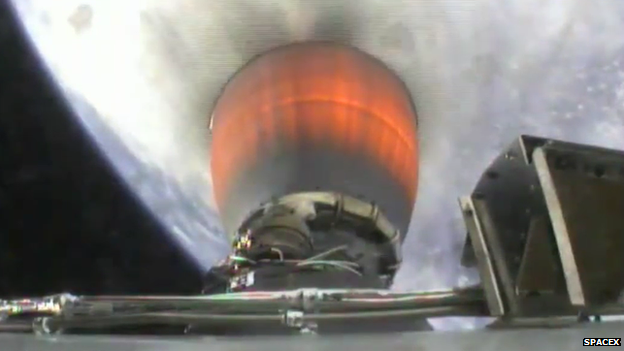
Onboard cameras captured the nine-minute ascent

The second-stage falls away after Dragon separates to begin its orbit-raising manoeuvres
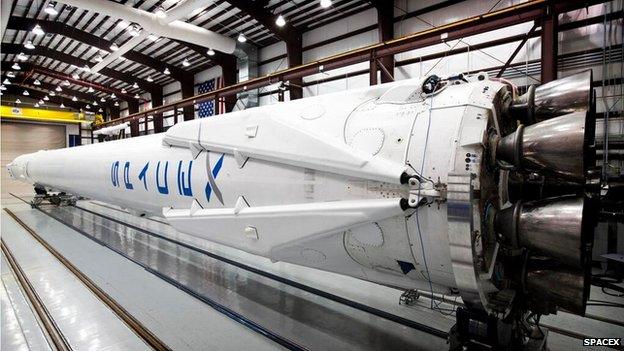
The landing legs are the 7m-long triangular features at the base of the first-stage
Jonathan.Amos-INTERNET@bbc.co.uk and follow me on Twitter: @BBCAmos, external
- Published30 September 2013
- Published4 April 2014

- Published26 March 2014
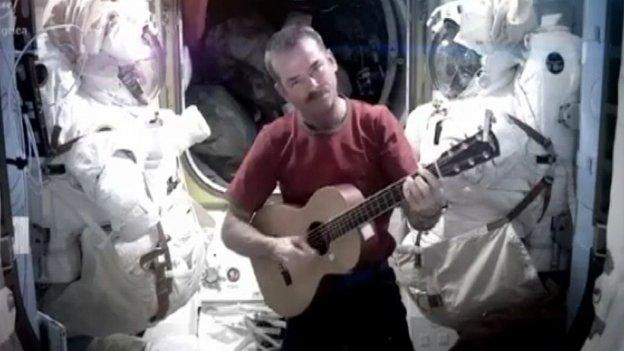
- Published23 March 2014
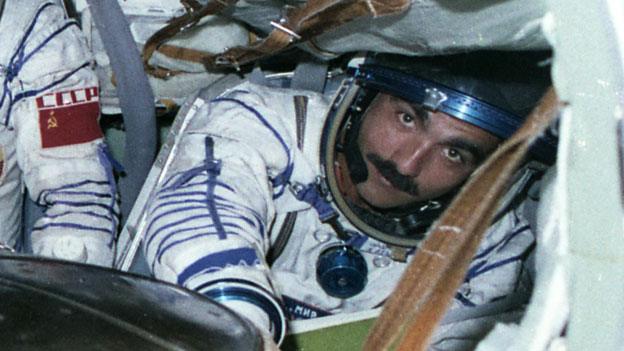
- Published8 January 2014
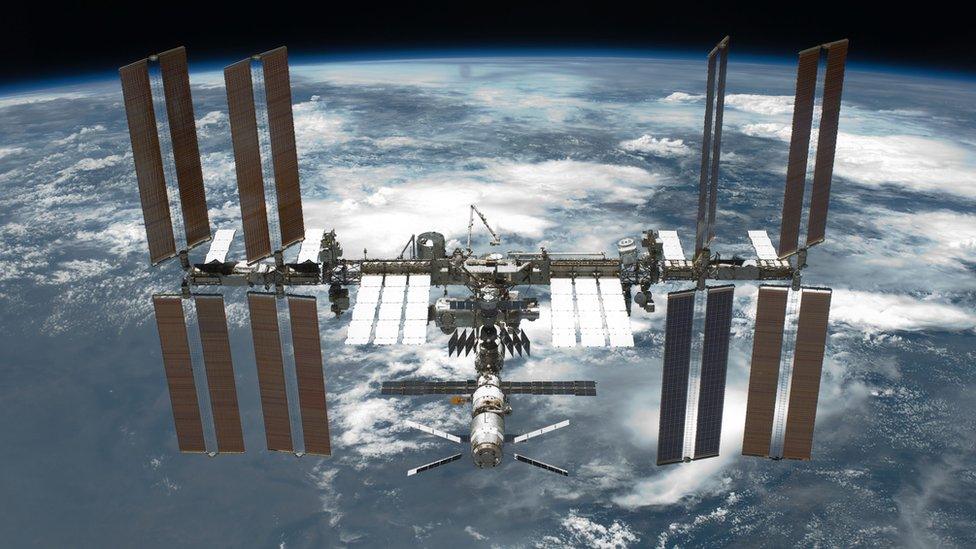
- Published3 December 2013
